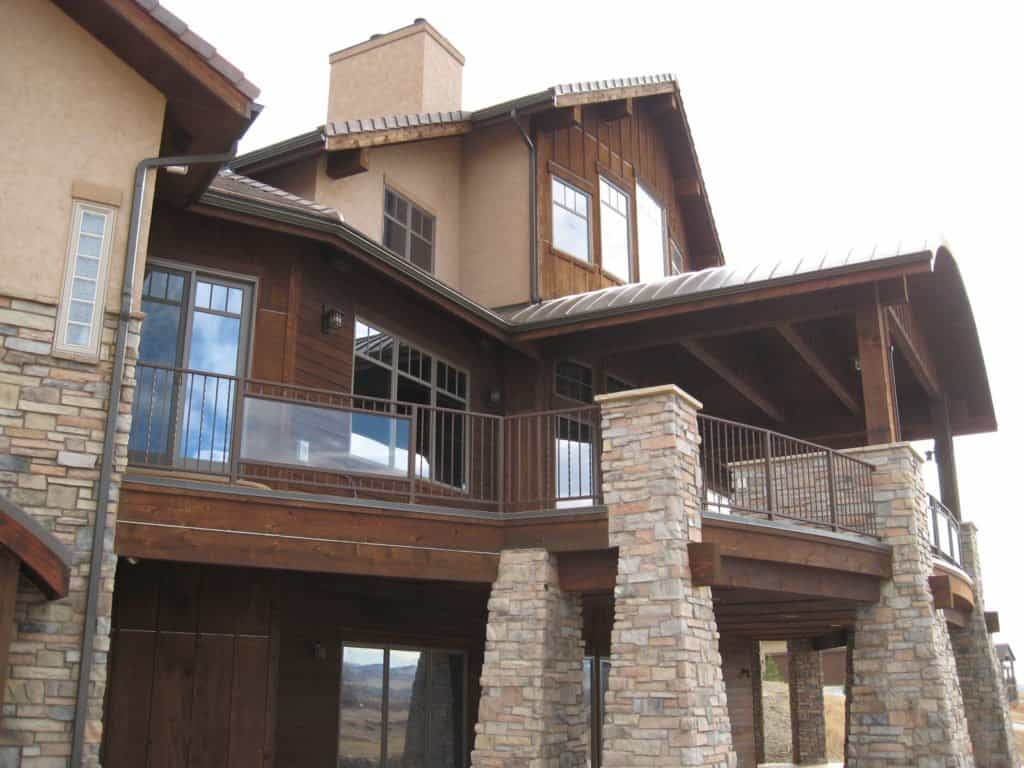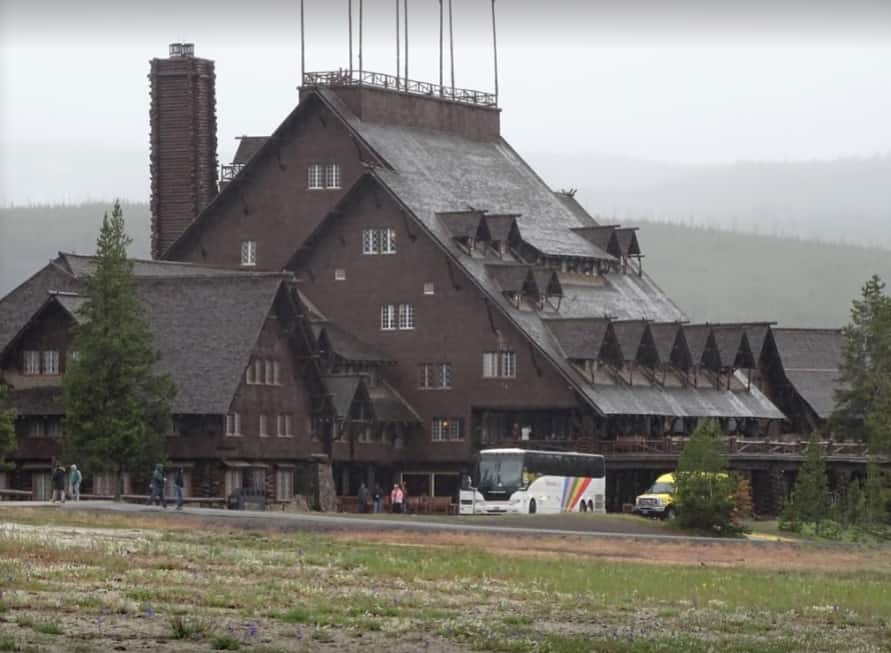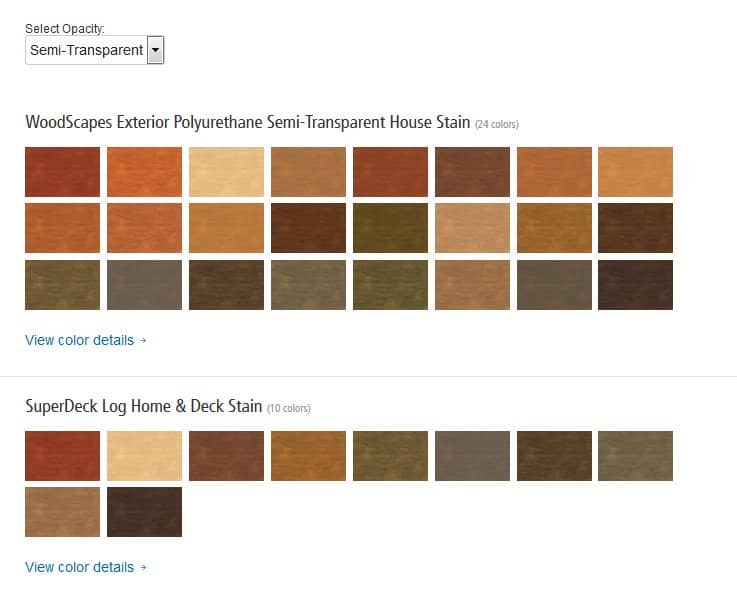Best Cedar Wood Protection From Weather

Picture above is stained with Super Deck Canyon Brown Semi-transparent oil stain
You will know how to protect Cedar wood, being resistant to weather outside. Learn tips, techniques, having Cedar well protected to it's highest degree. Key ingredients which adds to this protection, Cedar wood will endure time longest.
Also learning if you can stain or paint Cedar wood, keeping it natural outdoors, with a variety of stain color choices is the focus of this article.
How To Protect Cedar Wood Outdoors
First, understanding Cedar is a real plus, as you have just made a sizeable purchase, buying Cedar in the first place. Protecting Cedar will add lasting beauty for many years of enjoyment, and visual appointments to your exterior.
Knowing how to protect your valuable Cedar wood outside will save you time and money over the long run. Understanding Cedar in the first place will catapult your protection of the very expensive wood, best suited for exteriors from square one. Learning best way how to protect Cedar wood outdoors is a multiple topic process.
How To Keep Cedar Looking Natural
Best way how to keep Cedar wood looking natural is using the least amount of tint colorant particulates in a stain as you can. These stains are of the Transparency line with any manufacture you are looking at. Most have a Transparency stain named Natural. However, don't expect your Cedar wood to look exactly the same as before, after staining. Especially if you are using an oil stain, as this will certainly darken the wood, until the actual oil has time to cure and dry back out.
Using an oil natural stain, will darken the new Cedar wood, giving it an almost ''Wet look'' for many hours up to days or weeks. Again, if you are unsure of the intended appearance, I strongly suggest you test a smaller piece of Cedar wood first, using the stain you contemplating using throughout the wood project. Make sure the end result is what you are expecting, being as natural as you wish. Again, test the stain on a sample piece of Cedar first.
Even natural stains have some pigment in them, darkening the wood ever so slightly. Oil stains darken Cedar wood the longest, being wet, sealing out moisture, working it's self into the grain, much deeper than a paint stain.
Best Clear Cedar Finish For Outdoors
The best clear Cedar finish stain for outdoors is Linseed oil, hands down. Linseed oil is the primary ingredient in any oil finishes, which dries clear. You can find other clear water-based stains, but will not last nearly as long as a Linseed oil based stain will.
If money is a concern, choosing the cheapest, like Thompson's Water Seal is like throwing your money away. Thompson's Water Seal is certainly the cheapest, but you certainly get what you pay for. I've actually seen some of our customers who's used Thompson's 3 months before, not protecting Cedar wood surface. Allowing water to soak in, not beading up.
I've actually paid customers to properly dispose of this crap for them, using a stain that actually works like it is suppose to. Just because it's ''Clear'', doesn't mean inferior, but Thompson's Water Seal certainly gives a ''Clear'' description a bad name.
Having a clear finish for your Cedar, your best protecting oil stain is Linseed oil based. A stain having the most Linseed oil in it. There are many stains out there to choose from, some with Linseed oil part of the stain formulation, some not. But the one that sticks out the most, having the highest amount of Linseed oil for a clear finish is Super Deck sold by Sherwin-Williams Paint.
Super Deck was purchased by Sherwin-Williams about 5 years ago, reformulating, but still the very best Linseed oil stain based stain available. How I know? Read below.
How To Protect Cedar Wood For Outdoors

Back in 1999, I was invited up to Yellowstone National Park to participate in a walk-about with other potential contractors, looking over a painting/staining project the National Park Service needed. After looking over Lake Yellowstone Hotel, we moved to the other, looking over that one. The second project we needed to give numbers for was Old Faithful Lodge.
This is where I learned a few things, then coming back to Denver, doing my research. As we walked Old Faithful Lodge, the architect conducting the walk-about. He stated we all needed to incorporate our numbers including boiling Linseed oil on site, mixing with blocks of paraffin wax, manually brushing this heated mixture on the oldest wooden hotel structure in the National Park Service of the United States.
Seeing how well preserved this wooden structure was almost over 100 years, the Old Faithful Lodge had no deterioration, or rot, sitting in one of the harshest environments of extreme cold, moisture, very high in elevations. Keeping Linseed oil on it's exterior surface regularly, I knew I was on to something. Learning that the best ingredient that preserves Cedar wood was without question, Linseed oil.
Coming back to Denver, doing my research, looking at all the most popular stains sold, the one that stood out having the most Linseed oil was Super Deck. Having used this product on my own outside deck, it looks just as good today, as it did almost 20 years ago. When you learn something on your own, knowing the best, you want to share it with others, which I'm doing here.
Not meaning to write so much about best clear outdoor finishes, as this is not the main topic of discussion, but I just had to give you the full picture, how to protect Cedar wood for outdoors.
Caution Using Linseed Oil Stains
When working with Linseed oil using rags to stain, you Must lay them out, hanging them up after use like on a clothesline. If not, the properties of Linseed oil will ignite within hours if rags are not laid out. I've personally heard of this happening on several occasions, with the person staining being unaware, unfamiliar of combustibility.
If you wad up oil soaked rags, putting them in an open 5 gallon bucket, the Linseed oil will heat up, as part of the curing process. Not putting a sealed air-tight lid on the bucket, those same rags will start to smolder only a few hours later.
To insure those rags do not become a fire hazard, you must lay them out to dry, just like a clothesline, or a hook, stretching them out. Another good way if you toss all the oil soaked rags in a bucket, filling water from the garden hose into the bucket. You will be sure all is safe, and no accidents.
Cedar Wood Protection Overview Tips & Techniques
- Cedar wood is extremely weather resistant
- Natural original color of Cedar is light brown, almost blonde
- Cedar wood can be stained using Transparent or Semi-transparent stains
- Test any stain first, making sure of appearance, and adhesion properties
- You can always go darker, but not lighter with Cedar wood stains
- Best Cedar wood oil stains are Linseed oil based, which is the preserving matter
- Linseed oil is flammable, and all rags must be properly handled.
- Just because it's ''Clear'', doesn't mean inferior, but Thompson's Water Seal certainly gives a ''Clear'' description a bad name
- Linseed oil has protected The Old Faithful Inn in Yellowstone National Park nearly 100 years
- It is possible to boil raw Linseed oil, mixing with paraffin wax, if you really want the best, but today this is a bit overboard with newer stains
Cedar Wood Stain Colors

Cedar wood stain colors enhance natural cedar, giving a much richer, enjoyable sealant what you like best. All of these protect Cedar from discoloration that weather causes. Extreme Sun's rays, continued moisture will change Cedar over time, however if you stain your Cedar wood regularly, you can keep this change from happening, using color of choice.
Important to note, you can always go darker, but not lighter without additional time and work removing it. Also noting darker stain colors absorb heat more than lighter ones, just as solid body paint stains do.
Here, we have not discussed too much the best way to clean Cedar, as that is another discussion all together. Cleaning older discolored Cedar must be done, before any new stain is applied, if you intend using a Transparent or Semi-transparent stain. No need to bring Cedar back to it's original color of brand new wood if you intend using a solid body paint stain on it, as this will cover black, gray, and natural wood grain.
You will need to power wash uniformly the wood's surface, removing the top layer of wood scale that is sitting on top, probably already apart from the substrate, before putting any stain type on it.
Best of luck protecting your Cedar wood from weather and elements outside! Hope you enjoyed the reading, feel free to comment with your experiences below.



[…] over time, in that order. Getting grey out of the wood is and has been quite easy over the years knowing best Cedar wood protection today, with a wide variety of deck and wood cleaner products available on the market today. Power […]
[…] How To Protect Cedar […]
[…] 2 […]
[…] a cedar sealer when wanting to keep cedar […]
Cal’s article has been extremely helpful for me to make informed choices on how to treat cedar wood.
I appreciate how his recommendations are based on observations on site, in real life, at the Old Faithful Lodge and on his own deck. He is not influenced by advertisement from paint companies.
Thank you for taking the time to share your experience Cal.
Christel
We have a peckie cedar from west coast full thick boards been on house since 1977
We did not stain or protect in any way only let weather out. Their is some drying out going on should we start putting a clear linseed oil to keep protected
Most stains will extend its life, protecting, helping its weatherproofing.
This is the best and most honest article on working with Cedar wood I’ve read. Your knowledge base is from experience and using Yellowstone Lodge as the jewel of an example really gives me confidence that I can move ahead with my project. Many many thanks!
Is it better to expose/seal the rough or smooth side of the cedar?
Either side good to seal and expose. Which ever look you want, but most time rough side out.
do you recommend mixing linseed oil with turpentine as a primer?
Yes, if you can find turpentine on a shelf any more.
Do you recommend mixing 25% turpentine to linseed oil as a primer?
Wow thank for the great advise
That’s a great point you made from the get-go. Cedar timber can be expensive but I believe the price is worth it. Cedar is not only beautiful in smell and look, but it is so versatile! Properly protecting it is so key to its value.
Cedar is only grown in the upper northwest? I live in Wisconsin and we have cedar all over the place. Same goes for Michigan and Minnesota.
[…] satin sheens protects wood trim is it repels moisture the best. Warding off rain, beading up water, rolling off like a duck's back, or wax coating. Satin finishes […]
I don’t want to stain (done that, horrible mess). Can I use linseed oil on its own?
Using straight linseed oil can darken with multiple coats, over time. However, if you don’t mind darker wood, I’d suggest you use it like that.
[…] Quote from the source: … […]